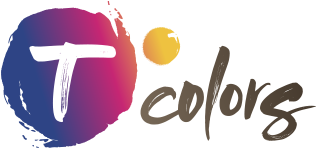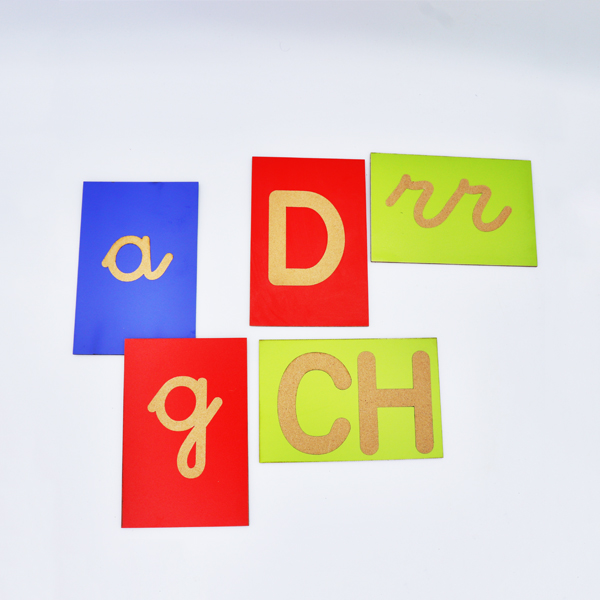In the Montessori method, the sensory area is a vital component for children’s development. It’s where children begin to explore the world around them through their senses, thus laying the foundation for meaningful and self-directed learning. One of the most exciting materials that can be integrated into this process is Tcolors relief painting, which not only stimulates the senses but also fosters concentration, sensory discrimination, and creativity.
Key Features of the Sensory Area
The sensory area in the Montessori method aims to foster the cognitive development of the senses and their subsequent refinement. Tcolors relief painting is a valuable tool to help children understand concepts such as classification and recognition of similarities. This material fits perfectly into the Montessori methodology as it is designed to develop the sense of touch through different gradations of texture.
Tcolors relief painting is presented on boards that allow children to explore and compare different textures by touch. These boards are designed for children to find pairs based on the roughness of the surface, promoting concentration and attention to detail. An ideal exercise is to perform this activity with closed or blindfolded eyes, forcing the child to rely on their sense of touch and sharpen their sensory perception.
Benefits of Tactile Stimulation
Tactile stimulation is essential in the development of babies and young children, as the sense of touch is ready from the beginning and allows them to explore and learn about the world around them. Some benefits include motor and psychosocial development, as well as toning and expanding the sense of touch, which stimulates neural connections and intellectual development.
Integrating Tcolors Relief Painting into Montessori Practice
By using Tcolors relief painting in the sensory area, not only sensory development is promoted but also the development of other areas such as language and mathematics. It is essential to remember to follow the child, as Maria Montessori taught us. Observing their interests and motivations at each moment will effectively guide their learning process.
Sensory materials, such as Tcolors relief painting, help children develop awareness of their environment, isolating them in different senses, difficulties, and qualities. They stimulate repetition and encourage self-control, crucial aspects in child development. Even with babies, sensory materials such as permanence boxes can be used to stimulate their curiosity and exploration of the environment.
How to Use Tcolors Relief Painting
To use Tcolors relief painting in Montessori sensory activities, you can follow these steps:
- Material Preparation: Use wooden boards approximately 18 x 30 cm. Apply Tcolors relief painting in different colors and textures using palettes or sponges, creating rough and smooth areas on each board.
- Material Presentation: Present the boards to the children attractively, showing the different textures and colors available. Encourage children to explore the boards with their hands, feeling the different tactile sensations they offer.
- Classification Activities: Provide children with classification activities using sensory boards. For example, you can ask them to match boards with the same texture or classify them according to their roughness.
- Tactile Stimulation with Closed Eyes: Carry out tactile stimulation activities with closed or blindfolded eyes, so that children focus exclusively on the sense of touch when exploring the boards.
- Observation and Monitoring: Observe children’s reactions and interests as they interact with sensory boards. Follow their pace and adapt activities according to their individual needs and interests.
How to Build Sensory Boards with Tcolors Relief Painting
Building sensory boards with Tcolors relief painting is a simple process that allows you to adapt materials to the specific needs of children. Traditionally, these boards consist of three wooden pieces with areas of sandpaper of different textures. However, a simplified and effective version involves using two boards of dimensions 18 x 30 cm.
To build these boards, different colors of Tcolors relief painting are applied to one side of each board, creating different textures and thicknesses. On the other side, areas without paint can be left to provide contrast and sensory variety. This adaptation allows children to intuitively and creatively explore and compare different textures.
Building Rough Letter Boards Using Tcolors Relief Painting
To build rough letter boards using Tcolors relief painting instead of sandpaper, you can follow these steps:
Materials Needed:
- Wooden boards of desired size.
- Tcolors relief paint in desired colors.
- Brushes or spatulas for paint application.
- Stencil letters or letter templates.
- Painter’s tape or paper tape to hold the templates.
Instructions:
Preparing the Boards:
- Begin by preparing the wooden boards, ensuring they are clean and smooth to facilitate the application of Tcolors relief painting
- If necessary, lightly sand the surface to remove any imperfections.
Choosing the Letters:
- Select stencil letters or letter templates that you want to use to create rough textures on the boards.
Attaching the Templates:
- Place the letter templates on the surface of the boards and secure them with painter’s tape to prevent movement during the application of Tcolors relief painting.
Applying the Relief Paint:
- Use sponges or spatulas to apply Tcolors relief painting over the areas where the stencil letters are located.
- Make sure to completely cover the letters with a uniform layer of Tcolors relief painting, keeping the templates in place to obtain sharp edges.
Drying and Removing the Templates:
- Allow the relief paint to dry according to the instructions. The drying time may vary depending on the thickness of the applied layer.
- Once the paint is completely dry, carefully remove the letter templates to reveal the rough textures created on the boards.
Finishing Touch:
- Once the boards are completely dry, you can touch up any necessary areas with relief paint to ensure that the rough textures are well defined.
- If desired, you can apply a coat of clear sealer over the boards to protect the paint and improve its durability.
With these simple steps, you can create rough letter boards using Tcolors relief painting instead of sandpaper! This method offers a creative and durable alternative to stimulate children’s sense of touch and promote the learning of letters in a fun and sensory way.
Conclusion
Tcolors relief painting is a valuable resource for applying Maria Montessori’s sensory techniques and promoting children’s cognitive development through the sensory area. By providing varied and stimulating tactile experiences, we help children explore and understand the world around them, laying the foundation for meaningful and lasting learning. Dare to incorporate Tcolors relief painting into your Montessori sensory activities and watch the skills of the little ones flourish!





